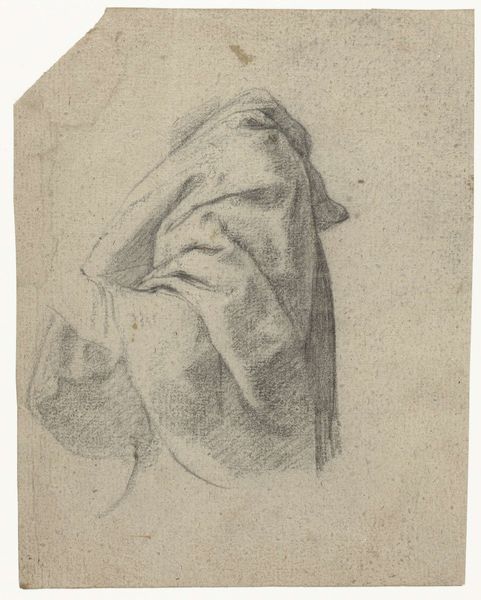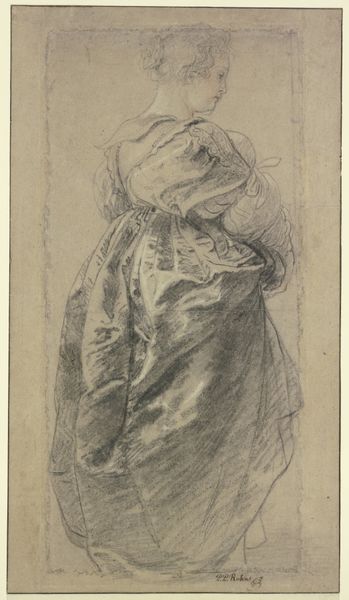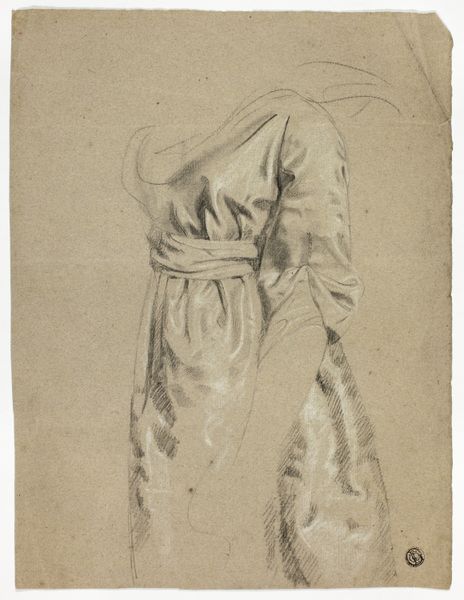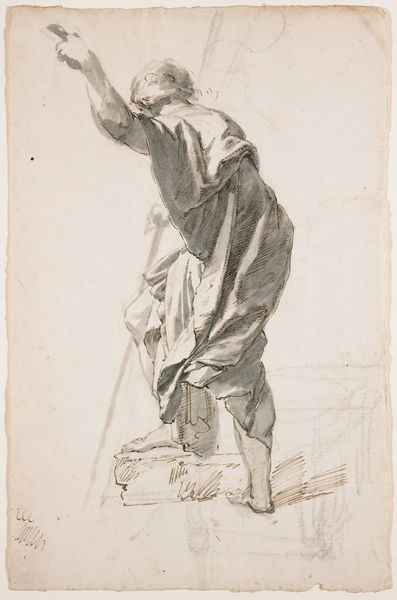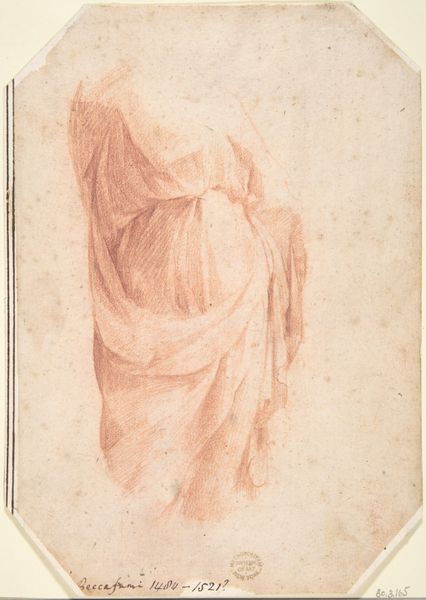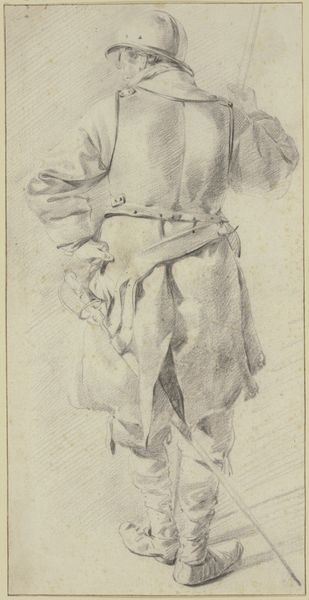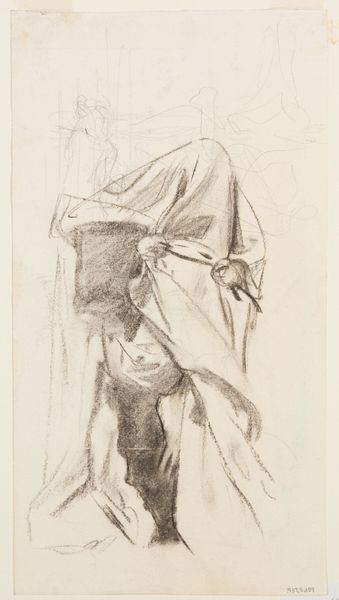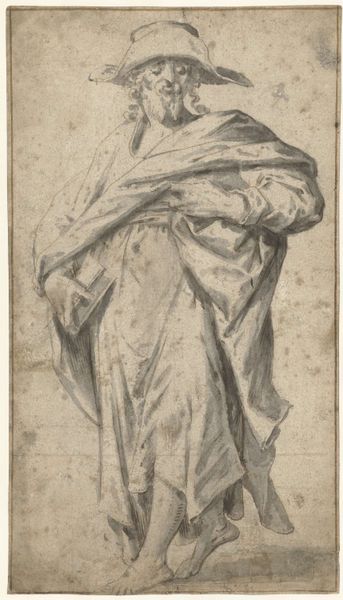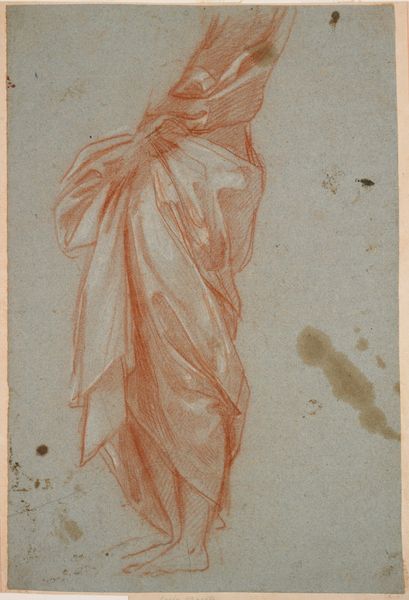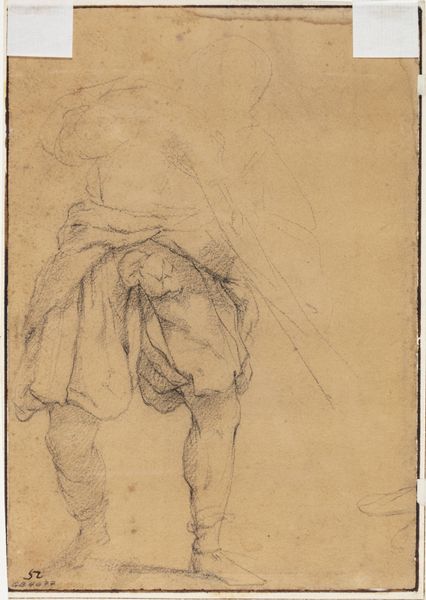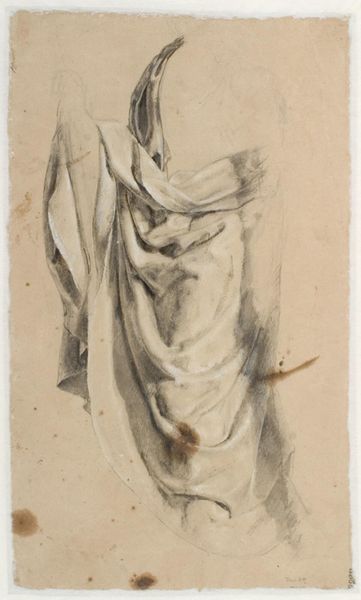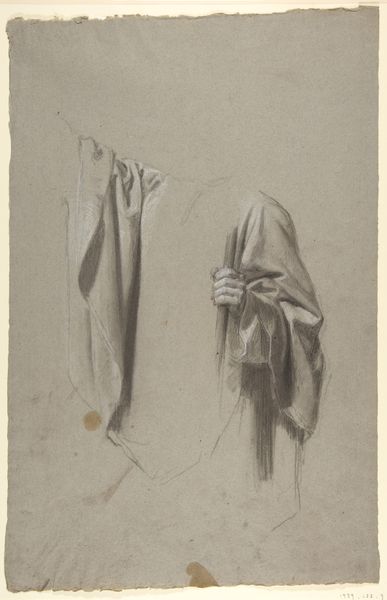
drawing, pencil
#
drawing
#
figuration
#
form
#
11_renaissance
#
pencil drawing
#
pencil
Dimensions: 10 5/8 x 7 7/8 in. (26.99 x 20 cm) (sheet)19 3/4 x 15 3/4 in. (50.17 x 40.01 cm) (outer frame)
Copyright: Public Domain
Daniele da Volterra made this drawing of drapery in the mid-16th century. It is a study in black chalk on paper. In Renaissance Italy, the art world was structured around workshops and academies. This drawing offers insight into how artists were trained. Here, Volterra focuses on the way fabric falls and folds, playing with light and shadow to create a sense of three-dimensionality. This skill was essential for depicting figures realistically in paintings and sculptures. Volterra worked in the studio of Michelangelo and later became known for painting drapery over nude figures in the Sistine Chapel, after Michelangelo’s death. So, it is interesting to consider this drawing, not just as a study of form, but as an example of how artistic and religious institutions shaped and sometimes constrained artistic expression. To understand the importance of drawings like this, we can look at workshop manuals, artists’ biographies, and records of artistic training from this period. Only by understanding its historical context can we understand the significance of this drawing.
Comments
No comments
Be the first to comment and join the conversation on the ultimate creative platform.
